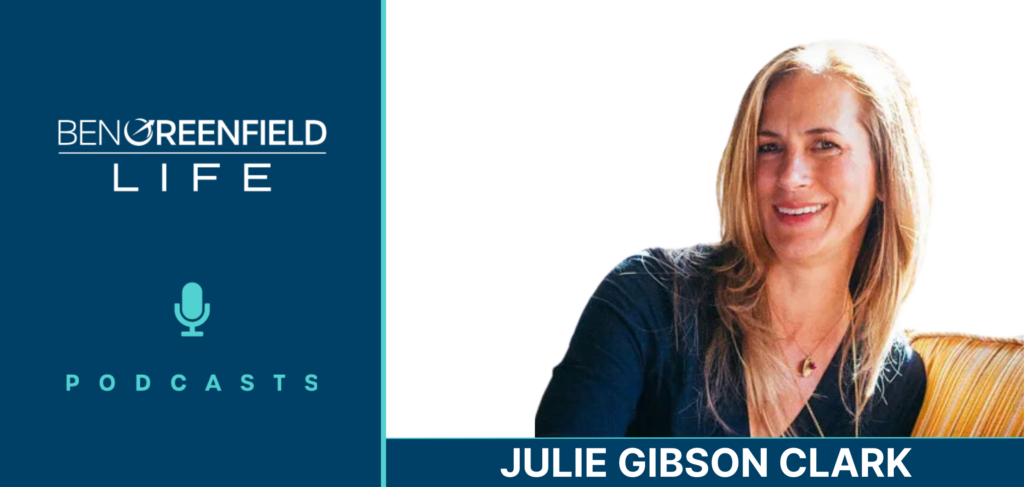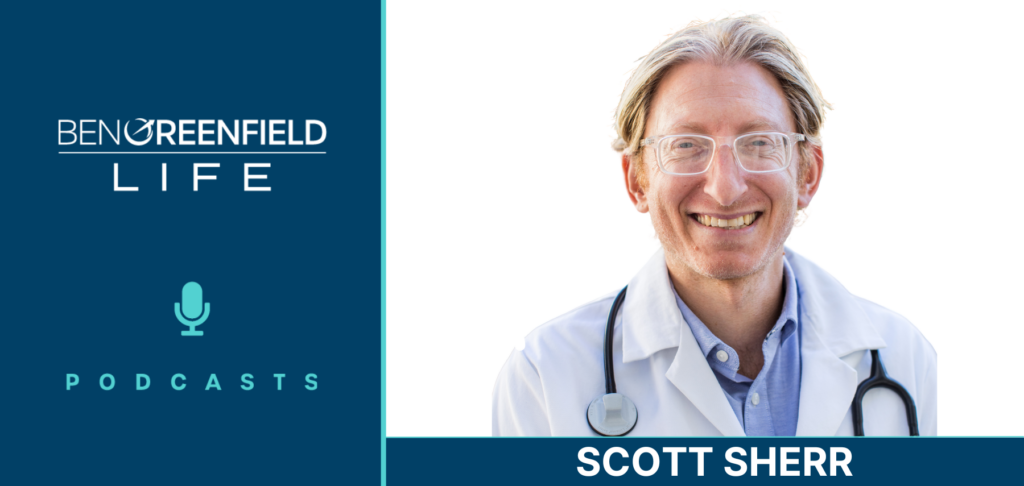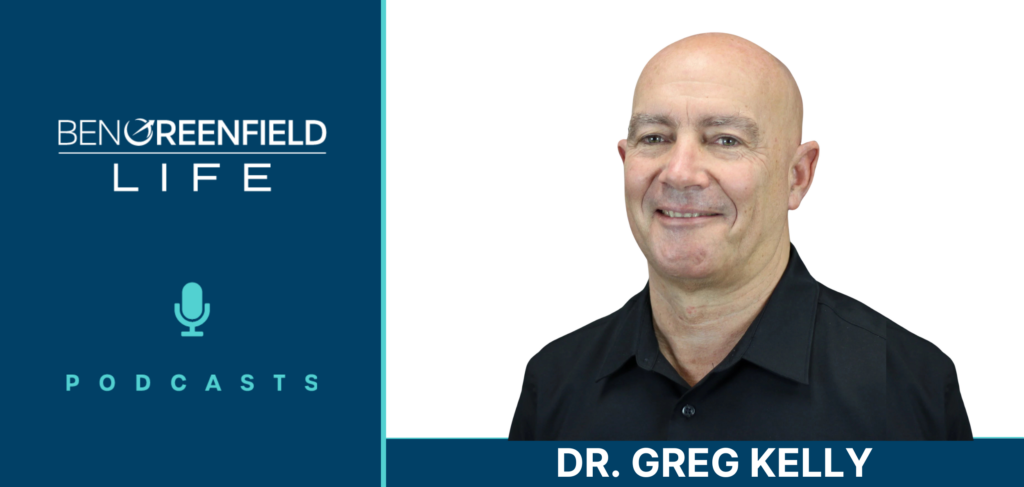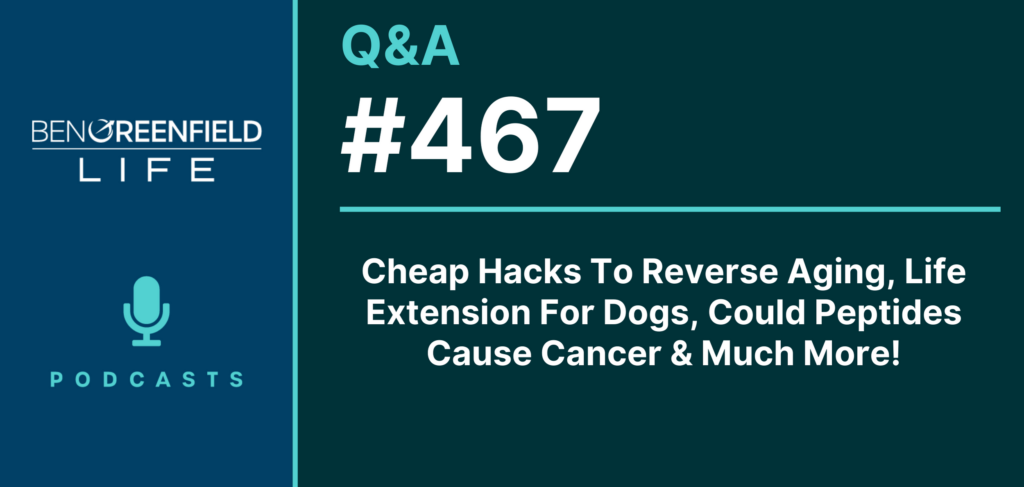February 26, 2019
Once reserved for the world's pro athletes and billionaires, gallivanting to fringe anti-aging clinics in Europe, the stem cell industry has now transformed into a trendy protocol that has health enthusiasts in America getting fat sucked from their butts and marrow siphoned from their bone to harvest and concentrate stem cells.
When it comes to anti-aging, there is evidence that reductions in stem cells are linked to aging.
Studies suggest that a gradual reduction in the number of stem cells in your body may act as a biological ticking clock for aging and that a dose of stem cells injected into a bum knee or elbow or mainlined into the bloodstream could produce profound transformations in recovery, a fight against frailty, and the overall aging process as a whole.
Indeed, after my first intravenous stem cell infusion, my own biological age dropped from 37 years old to 20 years old. Since then I’ve undergone plenty of fringe procedures, including banking my fat cells at US Stem Cell Clinic in Florida and my bone cells at Forever Labs in CA, going under full-body sedation for a head-to-toe stem cell makeover, doing Dr. Halland Chen's stem-cell muscle building protocol, and even being featured as the stem cell poster boy in the Men’s Health article “New Year, New Dick,” Outside Magazine’s “New Rules Of Healthy Living,” and an embarrassing Gizmodo piece about the “man who tried to make his penis bigger” as the guy who got stem cells injected into his genitals for sexual enhancement.
But even stem cells can be increased or enhanced via relatively simple dietary strategies that could be considered more natural or ancestral than a $10,000 syringe of placental, amniotic, umbilical, fat- or bone-derived stem cells. Many such strategies include food compounds that our ancestors have consumed as time-honored superfoods for thousands of years.
Let’s look at a few of my favorite examples, shall we?
#1: Colostrum
Colostrum, otherwise known as first milk or nature’s first food, is the first type of milk produced by mammalian mothers just before or immediately following the birth of an infant.
Colostrum supplements can be derived from numerous sources, including bovine milk, goat’s milk, and sheep’s milk and serve as a concentrated source of proteins, growth factors, and antibodies that are essential for early development of newborns.
Colostrum properties have been revered for thousands of years across many cultures: in ancient Chinese medicine, it was regarded as a potent health tonic, and for the Maasai people of Kenya and Tanzania, it has long been regarded as a crucial part of a warrior’s diet. In Britain, dairy farmers refer to colostrum as bee stings, and they used any surplus colostrum to make an extra-creamy and very healthy pudding.
Colostrum is far richer in antimicrobial peptides, immune-regulating compounds and growth factors than normal milk. It contains concentrated, low-volume forms of vital nutrients, as well as lymphocytes and antibodies and helps balance the gut microbiota and enhance the growth and repair of several tissue types.
- The cytokines are part of your systemic immune system and keep communication between immune cells active.
- The growth factors assist with the maintenance and growth of certain body tissues, including muscle and the gastrointestinal lining.
- Lactoferrin assists with iron absorption and is a crucial part of your immune defense system.
- Growth hormone (GH) works individually as well as together with the other growth factors to aid in the growth and function of gastrointestinal tissues, muscle and more.
- Immunoglobulins are small proteins that are used by your immune system to seek out and destroy foreign antigens.
- Finally, proline-rich polypeptides (PRPs – not to be confused with platelet-rich plasma, the other PRP) are important immune system regulators that encourage the growth of white blood cells and may restore the balance in cellular immune functions. PRPs may defend against oxidative stress and support brain health. Studies have now shown that colostrum is even a rich source of stem cell-like cells, and one fascinating study showed that, while colostrum alone had a considerable effect on stem cell activity, it was the combination of colostrum, yeast extract, skullcap, zizyphus (also known as jujube fruit), seaweed and turmeric that had the most profound activity likely to translate into therapeutic benefit.
I recently geeked out on colostrum quite a bit in my podcast in my show “The Renegade Pharmacist: How To Increase The Effects Of Psilocybin, The Secrets Of Colostrum, Fixing Constipation With Breathwork & More.” You can click here for the exact brand of colostrum I use.
#2: Algae
Algae (and phytoplankton, as you’ll see below) are the foundations of the marine food chain, and to hold that position, they must be incredibly nutrient-dense.
Pound for pound, algae is the most nutritionally dense food on the face of the planet – a single gram of algae contains the nutritional equivalent of 1,000 grams of fruits and vegetables!
Spirulina is an extremely nutrient-dense filamentous cyanobacterium that forms tangled masses in warm alkaline lakes found primarily in Africa and Central and South America.
Chlorella is a single-celled freshwater species of micro-algae that contains the highest known quality of chlorophyll found in nature and contains a nutrient density close to that of spirulina.
The chemical structure of chlorophyll is very similar to hemoglobin, allowing it to efficiently carry oxygen around in the blood and increase your red blood cell count. There is even some recent research that indicates that a combination of chlorophyll in your bloodstream and exposure to sunlight can allow you to produce ATP without eating any calories!
By weight, dried chlorella is about 45% protein, 20% fat, 20% carbohydrates, 5% fiber, and 10% vitamins and minerals. Algal amino acids are unstructured, which means that your body can absorb them easily and rapidly. This type of nutrient-density could easily be incorporated into a calorie-restricted or fasting protocol without compromising your overall nutrient intake.
Perhaps most interesting with regards to longevity is the ability of chlorella to assist with stem cell mobilization. One study evaluated effects on human stem cells in vitro and in vivo (in isolated laboratory environments and inside living organisms) of an extract from the edible cyanobacterium Aphanizomenon flos-aquae (AFA), a form of chlorella. A double-blind, randomized crossover study involving 12 healthy subjects evaluated the effects of consumption on stem cell mobilization in the body and found that it produced a better ability for stem cells to travel to the tissues where they are most needed.
In addition, inflammation has been shown to be a potent negative regulator of stem cell and progenitor cell proliferation, especially in the brain. Another study demonstrated that using spirulina to decrease a key neuroinflammatory cytokine in the hippocampus of aged rats reversed the age-related cognitive decline and increased neurogenesis in the rats. The spirulina protected the proliferative potential of hippocampal neural progenitor cells from an acute systemic inflammatory insult of lipopolysaccharide (LPS), which interestingly, are often found in a high-fat, high-sugar diet. Spirulina also promoted mitochondrial respiration and proliferation of stem cells in culture, supporting the hypothesis that a diet enriched with spirulina and other similar nutraceuticals may help protect the stem cells from damage.
Not all chlorella (or spirulina) is created equal. Since algae is a bioremediatant that can detoxify the water it is grown in and retain the toxins, you need to be careful with your sourcing. I personally eat about 20 to 30 tablets of chlorella and spirulina per day in the form of 100% organic, cracked-cell wall algae called EnergyBits, (use code: BEN to save some $$) which is grown in pristine freshwater tanks.
#3: Marine Phytoplankton
Marine phytoplankton is the group of microalgae that grows in oceans all over the world. Along with algae like chlorella, it is the foundation of the entire oceanic food chain and is responsible for producing up to 90% of all oxygen on earth.
There are about 40,000 different known strains, and a few of these strains (particularly those mentioned below) are extremely beneficial for humans. The phytoplankton strains that possess a nutritional profile compatible with human needs are dense in essential fatty acids (primarily EPA and DHA) that fuel your brain and nervous system, all amino acids for muscle, brain and nervous system support, enzymes and pigments that help eliminate oxidative stress and inflammation and carotenoids that play a role in regulating gene expression and in inducing cell-to-cell communications.
A marine biologist named Dr. Luis Lubian, who was involved in an extensive study of more than 43,000 types of marine phytoplankton, has discovered one strain of phytoplankton that is extremely nutrient dense and well absorbed. The scientific name of this strain of marine phytoplankton is Nannochloropsis gaditana or Nanno for short. It contains the right amount and balance of amino acids, enzymes, fatty acids, minerals, and pigments, which are the building blocks our bodies use to repair DNA, produce glutathione and generate growth hormones and stem cells.
In other words, this one unique type of marine phytoplankton gives the body practically all the raw materials it needs to produce healthy new cells and neurochemicals.
In addition to Nanno, another form of marine phytoplankton, referred to as Tetra (its full scientific name is Tetraselmis), has extremely high levels of superoxide dismutase (SOD), an extremely powerful antioxidant. It is also very high in vitamin C (a strong electron-donor & antioxidant),and has been shown to promote deep sleep.
For this strategy, you can simply take one to two dropperfuls of marine phytoplankton per day. I prefer the brand Ocean's Alive Raw Marine Phytoplankton, which is grown in a photobioreactor, a specially sealed growing environment containing pure ocean water, pure CO2, and natural sunlight, creating the perfect conditions in which marine phytoplankton can flourish. The freshly harvested marine phytoplankton is then added to a pure, concentrated ionic trace mineral solution that stabilizes each cell in a state of ideal freshness. The Oceans Alive brand contains both the Nanno and Tetra forms of the phytoplankton.
#4: Aloe Vera
Aloe plants are evergreen perennial plants, which means that they live longer than two years and grow green leaves all year long. This spiky plant grows naturally in dry, tropical climates in Africa, Asia, Europe, and the southern and western parts of the United States.
Aloe vera is a gelatinous substance derived from the fleshy leaves of the plant. Aloe vera has been recognized for its healing properties for at least 6,000 years. Known for being a “plant of immortality,” “burn plant,” “lily of the desert,” and “elephant’s gall,” it was presented to Egyptian pharaohs as a funeral gift and, over several millennia of humans using aloe, to help treat wounds, hair loss, hemorrhoids, and digestive issues.
Aloe vera contains several bioactive compounds, including vitamins, minerals, amino acids, enzymes, lignins, saponins, and salicylic acids. These, along with the other compounds it contains – steroids, carotenoids, terpenes, and phytosterols – allow aloe vera to play a role in modulating various biological activities, including preventing cancer, scavenging free radicals and exhibiting antimicrobial activity by rupturing bacterial cell walls.
One review found that aloe has been reported in several studies to improve glucose tolerance and overall glucose metabolism. For example, oral intake of aloe significantly reduced blood glucose in diabetic mice within just five days of treatment. Consumption of aloe vera juice and glibenclamide significantly reduce fasting blood glucose within two weeks in diabetic human patients, and similar results were reported with the use of aloe vera gel alone.
Aloe vera has also been shown to assist with mobilization of stem cells. This is likely because a linear relationship has been documented in humans between the number of circulating stem cells and the various phases of diabetes development, namely impaired fasting glucose, impaired glucose tolerance and insulin-dependent diabetes.
In other words, the development of diabetes is accompanied by a decline in the number of circulating stem cells, and aloe appears to ameliorate many of these issues.
Circulating stem cells have been reported to be capable of migrating to the pancreas and differentiating into functional insulin-producing cells. Increasing the number of circulating stem cells has been reported to significantly improve the condition of diabetic mice and insulin-dependent human patients. Aloe vera has also been shown to improve the viability of dental pulp stem cells, indicating that it may also have a significant positive effect on oral health.
Aloe vera juice is easily consumed as a daily shot or poured into smoothies or shakes. Look for a product that is organic and at least 99% aloe. Denoted as aloe vera inner leaf juice, or inner fillet, aloe vera gel is also an option, although many gels use carrageenan, which has been linked to digestive problems – a bit ironic since aloe gel is often used to aid in digestion.
When he was recovering from a spinal cord injury using a host of the plant-based stem cell support tactics you are reading about in this article and that we discuss on the podcast episode “Lightning Speed Healing Hack or Overpriced Fad? What You Need To Know About Stem Cells“, my friend Shawn Stevenson would eat a 3- to 5-inch chunk of aloe vera gel multiple times per day. If you prefer to use the juice, Lily of the Desert and Nature’s Way are two good brands.
#5: Coffeeberry Fruit Extract
Coffeeberry fruit, which has none the traditional taste associated with brewed coffee beans, is instead quite tart and contains three times the amount of antioxidants of powerhouse foods such as green tea and blueberries.
I first learned about this little-known nutrient when I interviewed Darin Olien on my podcast entitled The Indiana Jones Of Superfoods: Stem Cells, Air-To-Water Machines, Coffeefruit & More With Darin Olien. Nicknamed the Indiana Jones of Superfoods, Olien is a widely recognized exotic superfoods hunter, supplement formulator and environmental activist who travels the planet discovering new and underutilized medicinal plants.
Darin, who first came across coffeeberry fruit while hiking in Africa, reported to me that it is one of the few plants that have the capacity to increase levels of totipotent stem cells. Totipotent cells are one of the most important stem cells types because they have the potential to develop into any cell found in the human body, but they are also some of the most controversial because they are traditionally taken from brand new fetuses.
Most notably, in two clinical studies, coffeeberry fruit extract has been shown to significantly stimulate brain-derived neurotrophic factor, which is responsible for the development, differentiation, and protection of neurons in the central and peripheral nervous systems and is also strongly supportive of both cognitive and mental health.
In addition, it significantly upregulates sirtuin enzymes in a manner that can offset the aging process triggered by oxidative stress, as well as support stem cell functions, particularly when the body is under chronic or acute stress.
One study observed the effects of four weeks of coffeeberry supplementation in 20 college athletes and found that post-workout antioxidant capacity was significantly higher in the group that took coffeeberry than in the placebo group. The study also found that the coffeeberry group’s blood lactate levels were significantly reduced 10 minutes after exercise compared to the placebo group.
I personally buy 100% pure Hawaiian coffeeberry extract from Amazon, which is in powder form that I can blend into smoothies or shakes. I typically use it as a part of my “shotgun-approach” anti-aging smoothie, for which you can see a full ingredient list here.
#6: Moringa Extract
In that same podcast, Darin also introduced me to Moringa, a tree native to parts of Africa and Asia. Its name is derived from murungaii, which is the Tamil word for “drumstick.”
While there are 13 different species of Moringa, the most widely cultivated is Moringa oleifera, which is native to the foothills of the northwestern Indian Himalayas.
Different parts of the plant contain a wide profile of important minerals as well as protein, vitamins, beta-carotene, and various phenolics. Moringa also contains a number of antioxidants and natural antibiotics.
The phytochemicals in Moringa have been studied to be hepatoprotective, cardioprotective, antinociceptive (pain-reducing), DNA-protective and antiatherosclerotic. In studies, extracts from the flower of the plant have been shown to cause a significant increase in the proliferation of mesenchymal stem cells, while the root can cause an increase in cytotoxicity to cancer cell lines, effectively killing off cancerous cells.
Extracts from the leaves are known to combat high blood pressure, reduce insulin resistance, reduce inflammation and reduce the effects of diabetes.
Similar to coffeeberry fruit extract, organic Moringa leaf powder can easily be purchased online then added to teas (I’ve found that it mixes quite well with green tea), smoothies or shakes. If you want to get even more creative, simply take half a teaspoon of moringa powder, add a teaspoon of raw honey, squeeze a little bit of lemon, mix them together and add hot water for a very refreshing, relatively low-calorie tea.
Summary
From curcumin to blueberries to dark chocolate, there are plenty of other natural foods that, sans needles and injections, can significantly support your own stem cell health.
I'll be featuring many such compounds in my upcoming book (which you can learn more about by clicking here), and I also have a full Amazon list here of the best compounds I've discovered that you can order, keep in your pantry, and simply put into a smoothie.
Do you have questions, thoughts or feedback for me about these natural ways to increase your own stem cells? Leave your comments below and I will reply!














Glyphosate is the massive hidden dark variable
You shouldn’t use amazon, I’ll never buy anything from amazon! Ever! No matter how good the product may be. They are a evil, and shifty corrupt company. They appear good but, they’re sheep in wolves clothing.
I have arthritis in my left help – of course they want to do hip surgery but I want to try autologous stem cell surgery first – what product is best for me to boost my stem cells and I need a product that will not affect the kidneys.
Hi Ben & Team,
It’s important for me to share that the Ocean’s alive founder, Ian Clark, is a sexual predator and I have personally filed a police claim against him in his hometown of Cobourg, Ontario. I know several other women who he’s tried to sexually assault, and there have been several other police claims filed against him for this reason. He is a dangerous con artist who uses his “health expert” persona to lure women into his home and treatment facility to inappropriately take advantage of them. I need Ben to know this as I know he would not support or condone his products knowing this information. I have personally tried to contact your team a few years ago to notify you of this (nobody responded), however I’m seeing his product being advertised again and feel it’s very important and crucial to share.
Feel free to reach out to me with any questions, I’m happy to fill you in on more details if necessary.
Best,
Vanessa
God bless you! Thank you for not giving up!
when ocean’s alive changed their phytoplankton formula some years back, the power was gone. it also spoiled quickly. the old formula did not spoil, and I had a bottle partailly consumed that stayed good for 2 years! I reported this to several resellers, but no one seemed willing to test this. I also had problems with their ‘miron glass’ cold pressed oils. I stopped buying from them. I believe their quality control and processes may be corrupted.
My 99 year old mom, a Peruvian poet, suffer a stroke on July 25, 2019. What’s the simplest way to increase her amount of stem cells to see if any will travel to the affected area of the brain and possibly help rebuild some of the damaged part? What supplements might be the best for those who have suffered a stroke? Thank you for any tips that might help.
search on a less censored search engine: duckduckgo and yandex are what I use. you need beneficial substances that will pass the blood brain barrier. maybe a micronutrient liquid. also check for transdermal.
I will get back to you my aunt had a stroke and there are some ways outside the box that can heal a person and give them back there life.A 100 % so I will let you know.
We should be aware of the important points in this article about this boosting stem cells. This would really mean a lot. Thanks for sharing this one out.
What has worked the best? What percentage have you seen in a decrease of biological age from each like you shared with the injection?
75 yrs. young, and fasting 5-6 days each month. Have been working on this method for about 6 months. We choose the week, depending on what’s in our fridge. I am Diabetic 2, and find hardly any discomfort with fasting for so many days. If I feel tired or not well, I will have a bit of vegan broth until it passes. Hunger definitely passes. I find I feel better than I do while not fasting, So I could try it more often, I suppose. Is there any down side to a Diabetic fasting even tho” I feel better? My Blood sugar numbers have yet to improve much, and I still have high LDL and triglycerides, but I carry a pretty heavy viral load due to Herpes virus, and get frequent outbreaks. Also, this all started when I was recovering from stroke after a triple by-pass in 2015. I am plant based and whole food based, a vegetarian with no eggs or recently no cheese. I think I can keep improving on the diet part, Hopefully, my stem cells will thank me.
I take Serrapetase and Nattokinase to clear out the dead protein building up in my body. I also find eating certain mushrooms helps a lot (do some research). The best thing, I also do is to eat lots of prebiotic & fermented foods, especially ones with inulin. I am a vegetarian too. :)
Hi, love the articles and podcasts are fantastic and very informative and well researched.
My problem is that I get confused- it seems impossible to take all supplements etc. how to you workout what should be the best for you with maximum health benefits and anti aging properties?
Fred – Australia
I’ve tried spirulina. I knew it was incredibly nutrient dense and one of the oldest living life forms on the planet. I didn’t know it could potentially reverse cognitive decline and protect stem cells, that’s good to know, thanks.
I take 3 grams of chlorella per day but i am unable to go much further because i feel fatigued that day. Is this detox symptoms?
Thanks Ben, you’re awesome as always. I had read a study which stated that Moringa inhibits Nitric Oxide. Is it still ok for those people who have low nitric oxide levels in their bodies?
Ben, how did you determine age difference (37->20) after Stem Cell procedure? Did you measure Telomere length and if so, who measured that for you?
We discuss it in depth in this podcast: https://goo.gl/R9AqJa
The spirulina protected the proliferative potential of hippocampal neural progenitor cells from an acute systemic inflammatory insult of lipopolysaccharide (LPS), which interestingly, are often found in a high-fat, high-sugar diet. – what kind of sugar you are talking about here? :)
Is there anything to help with lung problems, COPD, asthma, and emphysema
Dha 3,000-5,000 per day from nowfoods. They have a 500. Reevaluate in 30 days
Any thoughts on how to use stem cells for recovery from a knee injury/knee surgery. Thx
HAD A MINISCUS TEAR AND DID THE STEM CELLS/EXOSONES AND IM CLOSE TO 100%
If you don’t mind me asking, what was the cost?
I have seen 4 to 6000 depending on geography.
Thanks, Richard
I’d like to know how much that costed you as well.
I’ve been quoted between $10k-$12k for SVF infusion plus injection at several clinics using adipose derived stem cells.
Did you have surgery 1st and then did the stem cell treatment, or did you go right to the treatment? Thanks
I am considering this for my hip. Where did you have this done?
I’m using it for right tibial plateau fracture recovery end of March. I expect full ROM to return after injection:-)
Intra-articulatar knee injection. Can be bone, adipose, or umbilical derived stem cells, or placental derived exosomes from Msc stem cells.
Urine therapy also contain your own stem cells. Look it up also contact Dr. Group. He soaked his urine and placed it on his leg that was injured. He said it helped him and it is the oldest most extensively used medicine your own body makes to help you.
Any concerns re:blue green algae and potential links to Alzheimer’s ?
Is there enough colostrum in Kion Flex for stem cell activation and if so should it be cycled because of MTOR activation and IGF1 signaling?
Hey Ben,
Just a note – The coffee berry extract you mention and link to in your article and on your anti-aging smoothie recipe is liquid but in your article you list it as being a powder. I find the drops easier to use anyway.
I thought for sure that you would mention that 5+ days water fasting prompts the body to produce stem cells. Maybe I missed it.
David Kessler
Yes, but fasting is not a supplement.